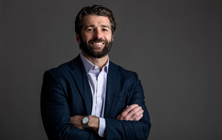
Justin Mosquera will lead a roundtable discussion at Environment Analyst's Global Business Summit (27-28 June, Chicago), at which he will explore how to make ESG an "all-business mission" — enabling the move from stated commitment to demonstrable action. Here, he offers a preview of his insights.
Where do you start when asked by a client to help embed ESG into the business?
JM: The best place to start is asking a client what their ESG ambitions are. Once their ambition is understood, we provide options that enable them to achieve those ambitions through their business actions. It’s also good to stretch beyond those ambitions and introduce closely aligned solutions that can take them from good to great. For example, a client with far-reaching decarbonization ambitions may not have considered how the project delivery could also improve social equity. This holistic way of thinking really helps clients embed E, S, and G into their business.
How important is purpose to the process of achieving that? Is this something you at AECOM focus on?
JM: At AECOM, we're driven by a common purpose to deliver a better world. The ESG goals outlined in our Sustainable Legacies strategy are pivotal to achieving that. It is key to know that each of our clients will have a unique purpose for pursuing ESG. That said, although understanding that purpose will likely result in the process having better outcomes, it shouldn’t be the near-term goal to push all organizations in this more sustainable direction. With everyone across the world at different points on this journey, the most important priority is getting organizations and regulatory authorities onboard with embedding ESG as a way of doing business.
What are the most challenging or most commonly seen barriers to embedding ESG? How are these addressed?
JM: Understanding. So many people who believe in doing better have a remarkably difficult time understanding and implementing ESG principles on projects and programs. We try to frame the conversation around five themes to help make ESG more tangible:
- Do you want to deliver this project with resiliency in mind?
- Do you want to deliver this project in a socially equitable manner?
- Do you want to consider renewable energy sources for project delivery?
- Do you want to minimize the carbon footprint of this project?
- Do you want to deliver this project with sustainability in mind?
As people inevitably answer "yes" to these questions we can walk them down the path of how they can modify their efforts to better accomplish these objectives. This often involves a series of trade-offs, and after a few iterations they begin to build the ability to integrate these ESG themes on their own.
What skills are most needed within the consulting industry to help deliver the ESG imperative, and how are these best developed or acquired?
JM: At a high level, the ability to apply systems thinking is key for success. This involves taking in a broad view of the world, integrating across all the most critical challenges, and synthesizing these insights to drive sustainable change. With this view we can implement durable and sustainable business transformation, which will flow down to the project level.
From a tactical perspective within the consulting industry, we need a mix of environmental, social and governance expertise and curious professional services personnel who are open to learning and continuous improvement. Acquisition of already skilled ESG experts requires a clear articulation of an organization’s ESG strategy alignment. However, developing comprehensive training programs is a better way to integrate ESG into the fabric of a company’s delivery and grow the number of skilled ESG professionals that can deliver the ESG imperative.
What is the most effective way of countering the social and political associations the ESG concept has attracted recently — and their sometimes negative effects?
JM: When people perceive ESG to have a negative connotation, it’s often a problem of misunderstanding. Unpacking the term ‘ESG’ and moving to a more relatable language that people understand and are comfortable with is the best way to counter negative associations. Analysis completed across political divides has found that ESG investing is good investing, adding to the benefits of more desirable outcomes for communities and the environment we live in.

Justin Mosquera, Global ESG Business Lead, AECOM
Justin is AECOM’s ESG Global Business Lead, working with AECOM's industry leading ESG experts across the globe to deliver Sustainable Legacies on all our projects (e.g. strengthening resilience, growing sustainably, transitioning to new energy solutions, achieving net zero emissions and improving social outcomes).
Justin’s 21 plus year career at AECOM has included roles as the North America EHS & Air Leader, Northeast Environment Regional Business Line Leader, and Industrial Market Sector Leadership roles.
Professional focus areas have included air measurements, due diligence / M&A, multi-media site investigation, EHS, multidisciplinary remediation projects at scale and programmatic client account management.
Hear more from Justin at Environment Analyst’s Global Business Summit (27-28 June, Chicago), where he will be leading a roundtable discussion on how to make ESG an "all-business mission" — enabling the move from stated commitment to real demonstrable action.
The Summit will also provide critical intelligence on how to deliver real ESG integration both internally and externally, and support the journey to an equitable transition. Hear industry leaders share their insights on supporting the ‘S’ in ESG, harnessing data to achieve decarbonization and climate goals, incorporating enforceable ESG commitments and sustainability metrics into infrastructure development and delivery, and more.
